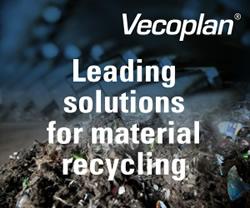Aluminum and steel are traditional material choices for battery enclosures. Yet, composites could provide an improved alternative, which will significantly improve the performance of the EVs.
 The Benefits of Composite EV Battery Enclosures
The Benefits of Composite EV Battery Enclosures

Jari Sopanen, Transportation Segment Owner | Exel Composites
The United States Environmental Protection Agency (EPA) says the for every 100 pounds of weight taken out of a vehicle, the fuel economy is increased by one to two per cent. This holds opportunity for the electric vehicle (EV) sector, which is fighting to boost energy efficiency and quash ‘range anxiety’. Jari Sopanen, Transportation Segment Owner at global composites producer Exel Composites, explains how composite EV battery enclosures could support the overall light weighting mission, and provide additional structural benefits compared with the traditional metal offerings.
Battery enclosures for EVs, also called frames, boxes or housings, have a primary purpose of holding and protecting the battery cells. They come in different shapes and sizes, and much like other vehicle parts, are an arena for several materials fighting for prominence.
Aluminum and steel are traditional material choices for battery enclosures. Yet, composites could provide an improved alternative, which will significantly improve the performance of the EVs.
Hurdles
Mass EV adoption is currently held back by range anxiety — concerns that vehicles won’t be able to travel far enough on a single charge. To alleviate range anxiety, there is an unquestionable need for safe, lightweight and cost effective EVs. For these EVs to make it in the market, the components that form them must also possess these qualities. If a part can be made using a lighter material without compromising safety and function, then it’s a no-brainer for designers and material selectors in original equipment manufacturer (OEM) and System Supplier businesses.
In some instances, switching from metal to composite doesn’t just match previous functionality, it surpasses it by bringing in additional benefits. This is demonstrated in the case of EV battery enclosures, as composites offer weight reduction, improved insulation, reduced noise, vibration, and harshness. Let’s look closer at each characteristic:
Weight reduction
Arguably the main driver of choosing composites, up to 40 per cent in weight savings is achieved if the enclosure is made from 100 per cent composite material rather than aluminum. A lighter battery box made from composites has a positive knock-on effect on the entire vehicle design. With a lighter vehicle weight attributed to the battery enclosures, smaller batteries and a reduced engine sizes are required to haul a lighter vehicle. This positive spiral results in reduced vehicle cost and range anxiety, which will play a big role in the mass adoption of EVs.
Insulation
Aside for being a lighter material in their own right, composites take away the need for a separate insulation system, which reduces weight even further, as well as helps streamline the supply and value chain. With metal battery enclosures, an added insulation system around the material is required to keep the batteries in operational temperatures. Due to the insulating properties of composites, these materials already do a good job of preventing heat transfer, without the need to add more weight-increasing parts in the system.
Noise, vibration, & harshness
While not a safety critical factor, a quieter vehicle is a more commercially viable vehicle. Noise vibration and harshness (NVH) is the result of vibration or noise, which is transmitted and radiated acoustically in the cabin. NVH is less with composites than with metals, as they have inherent damping properties. This is true for the battery enclosures as well as other vehicle parts and could mean the difference between a luxury driving experience and a less comfortable one.
Safety
Looking at the wider vehicle, composite battery casing can be designed as part of the vehicle body structure, not only protecting the battery, but also the passengers of the vehicle. The strength and stiffness properties of composites outweigh those of aluminum or steel, providing better crash safety. This integration will require close collaboration between the battery enclosure suppliers and chassis designers, but offers a real possibility to boost vehicle safety.
Pultrusion
 High volume production is essential in reducing overall costs. It is possible to use continuous manufacturing methods to produce EV batter box components, such as pultrusion. Pultrusion as a process enables composite manufacturers to pack in more fibers in the same cross section, compared with other composite manufacturing methods, allowing stronger, but lighter parts to be made.
High volume production is essential in reducing overall costs. It is possible to use continuous manufacturing methods to produce EV batter box components, such as pultrusion. Pultrusion as a process enables composite manufacturers to pack in more fibers in the same cross section, compared with other composite manufacturing methods, allowing stronger, but lighter parts to be made.
Remember, the fibers are the part that carries the load in the material. Working closely with the composite manufacturer allows you to precisely engineer the fiber content and alignments to achieve the best possible strength-weight properties.
What’s next?
If OEMs are going to reap the energy economy returns of light weighting that the EPA predicted, composites will no doubt play their role. This could be a much bigger role than simply reducing the mass of the vehicle, but also improving crash safety, driving dynamics and experience as well as overall strength of the vehicle. Range anxiety remains one of the key hurdles that the EV sector must overcome, and thinking outside of the conventional material choices for battery enclosures are essential steps to reducing vehicle weight, and reaping fuel economy returns.
The content & opinions in this article are the author’s and do not necessarily represent the views of AltEnergyMag
Comments (0)
This post does not have any comments. Be the first to leave a comment below.
Featured Product

